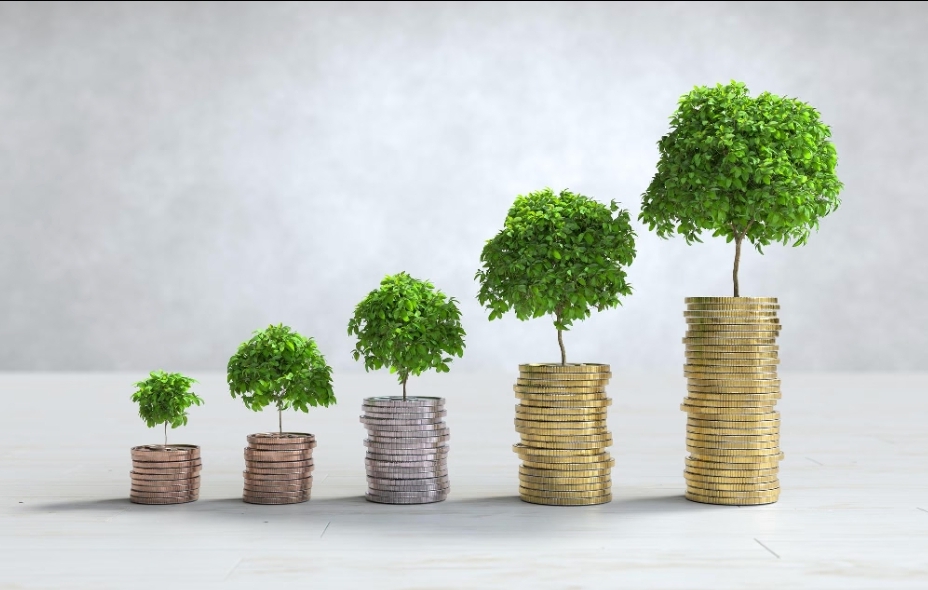Business
How Sumatha Kondabolu’s Strategic Insight Shapes the Future of Pharmaceutical and Medical Devices Quality

Byline: Katreen David
Navigating the fast-paced terrain of life sciences demands more than just compliance—it requires a futuristic outlook on pharmaceutical quality assurance. Sumatha Kondabolu exemplifies this forward-thinking mindset with her extensive experience spanning over 20 years. Currently a senior quality specialist and as a quality advisor at Qualio, and a vice-co chair RAPS Quebec LNG, her role involves adapting to regulatory changes while actively redefining how they are interpreted and applied across medical devices and pharmaceuticals and in the life science industry.
Sumatha Kondabolu’s unique perspective merges traditional standards and future challenges. Through her foresight on industry shifts and inventive quality systems, she meets today’s demands head-on and prepares for tomorrow’s challenges.
“Success in life sciences hinges on anticipating future changes and actively reforming industry standards,” Sumatha Kondabolu asserts. “My methods integrate advanced quality systems with the comprehensive depth of regulatory evolution.” This speaks volumes about how she aids organizations in staying ahead in a shifting industry that touches human lives.
Lifelines of Modern Medicine: The Role of Medical Devices and Pharmaceuticals
The medical device and pharmaceutical industries are the bedrock of modern healthcare, delivering innovations that transform patient care and treatment outcomes.
Medical devices range from simple tools like bandages to complex technologies like MRI machines, playing a critical role in diagnosing, monitoring, and treating conditions.
On the other hand, pharmaceuticals encompass everything from vaccines to pain relievers. They provide essential interventions to manage and cure diseases.
Together, these industries fuel advancements in medical science, improve quality of life, and enable healthcare systems to address everyday health needs and global health crises. Their continual evolution makes certain that treatments remain effective and accessible.
Tailoring Quality Systems to Industry Needs
Sumatha Kondabolu’s role in the industry involves developing and implementing quality management systems hands-on. Her extensive experience with various regulatory frameworks, including the Food and Drug Administration (FDA) and International Organization for Standardization (ISO) standards, enables her to tailor solutions that fit the specific needs of each organization.
Kondabolu emphasizes the importance of creating quality systems that are both adaptable and scalable. “Effective quality management is about understanding the present and anticipating the future,” she notes. Her initiatives guarantee that companies are both compliant and well-equipped for upcoming regulatory changes.
Navigating the Evolving Regulatory Sphere
Frequent regulatory updates and technological advancements characterize the life sciences sector. Sumatha Kondabolu’s expertise is crucial in helping organizations navigate these changes smoothly. Her methodology involves continuously monitoring and updating quality systems to align with new regulations and technological innovations.
Staying ahead of regulatory trends means that Sumatha Kondabolu offers a helping hand to companies to mitigate risks and maintain high standards of quality. Ultimately, this supports their growth and success in a competitive industry.
Apart from fulfilling her duties while on the clock, she has also taken on the role of a vice co-chair person for the Regulatory Affairs Professionals Society (RAPS) Quebec LNG. Within the scope of the RAPS, she mentors professionals and students on regulatory affairs.
Her contributions to the vast field of life sciences reflect her deep-rooted understanding of the aspects of art and technology that surround her craft. Sumatha Kondabolu’s adept navigation of regulatory changes and technological advancements turns potential hurdles into stepping stones for innovation. Her forward-thinking blueprints inspire future medical device experts to explore and excel in a field designed to improve and save lives.
Business
13 Reasons Investors Are Watching Phoenix Energy’s Expansion in the Williston Basin

As energy security becomes a growing priority in the United States, companies focused on domestic oil production are gaining attention from investors. One such company is Phoenix Energy, an independent oil and gas company operating in the Williston Basin, a prolific oil-producing region spanning North Dakota and Montana.
Phoenix Energy has established itself as a key player in this sector, expanding its footprint while offering structured investment opportunities to accredited investors. Through Regulation D 506(c) corporate bonds, the company provides investment options with annual interest rates ranging from 9% to 13%.
Here are 13 reasons why Phoenix Energy is attracting investor interest in 2025:
1. U.S. energy production remains a strategic priority
The global energy landscape is evolving, with a renewed focus on domestic oil and gas production to enhance economic stability and reduce reliance on foreign energy sources. The Williston Basin, home to the Bakken and Three Forks formations, continues to play a critical role in meeting these demands. Phoenix Energy has established an operational footprint in the basin, where it is actively investing in development and production.
2. Investment opportunities with fixed annual interest rates
Phoenix Energy bonds offer accredited investors annual interest rates between 9% and 13% through Regulation D 506(c). These bonds help fund the company’s expansion in the Williston Basin, where it acquires and develops oil and gas assets.
3. Record-breaking drilling speeds in the Williston Basin
Phoenix Energy has made significant strides in drilling efficiency, ranking among the fastest drillers in the Bakken Formation as of late 2024. By reducing drilling times, the company aims to optimize operations and improve overall production performance.
4. Expansion of operational footprint
Since becoming an operator in September 2023, Phoenix Energy has grown rapidly. As of March 2025, the company has 53 wells drilled and 96 wells planned over the next 12 months.
5. Surpassing production expectations
Phoenix Energy’s oil production has steadily increased. By mid-2024, its cumulative production had exceeded 1.57 million barrels, outpacing its total output for 2023. The company projected an exit rate of nearly 20,000 barrels of oil equivalent per day by the end of March 2025.
6. High-net-worth investor offerings
For investors seeking alternative investments with higher-yield opportunities, Phoenix Energy offers the Adamantium bonds through Reg D 506(c), which provides corporate bonds with annual interest rates between 13% and 16%, with investment terms ranging from 5 to 11 years, and a minimum investment of $2 million.
7. Experienced team with industry-specific expertise
Phoenix Energy’s leadership and technical teams include professionals with decades of oil and gas experience, including backgrounds in drilling engineering, land acquisition, and reservoir analysis. This level of in-house expertise supports the company’s ability to evaluate acreage, manage operations, and execute its long-term development plans in the Williston Basin.
8. Focus on investor communication and understanding
Phoenix Energy prioritizes clear investor communication. The company hosts webinars and provides access to licensed professionals who walk investors through the business model and operations in the oil and gas sector. These efforts aim to help investors better understand how Phoenix Energy deploys capital across mineral acquisitions and operated wells.
9. Managing market risk through strategic planning
The energy sector is cyclical, and Phoenix Energy takes a structured approach to risk management. The company employs hedging strategies and asset-backed financing to help mitigate potential fluctuations in the oil market.
10. Commitment to compliance
Phoenix Energy conducts its bond offerings under the SEC’s Regulation D Rule 506(c) exemption. These offerings are made available exclusively to accredited investors and are facilitated through a registered broker-dealer to support adherence to federal securities laws. Investors can review applicable offering filings on the SEC’s EDGAR database.
11. Recognition for business practices
As of April 2025, Phoenix Energy maintains an A+ rating with the Better Business Bureau (BBB) and is a BBB-accredited business. The company has also earned strong ratings on investor review platforms such as Trustpilot and Google Reviews, where investors often highlight clear communication and transparency.
12. A family-founded business with a long-term vision
Led by CEO Adam Ferrari, Phoenix Energy operates as a family-founded business with a focus on long-term investment strategies. The company’s leadership emphasizes responsible growth and sustainable development in the Williston Basin.
13. Positioned for long-term growth in the oil sector
With U.S. energy demand projected to remain strong, Phoenix Energy is strategically positioned for continued expansion. The company’s focus on efficient drilling, financial discipline, and structured investment offerings aligns with its goal of building a resilient and growth-oriented business.
Final thoughts
For investors looking to gain exposure to the U.S. oil and gas sector, Phoenix Energy presents an opportunity to participate in a structured alternative investment backed by the company’s operational expansion in the Williston Basin.
Accredited investors interested in learning more can attend one of Phoenix Energy’s investor webinars, which are hosted daily throughout the week. These sessions provide insights into market trends, risk management strategies, and investment opportunities.
For more information, visit the Phoenix Energy website.
Phoenix Capital Group Holdings, LLC is now Phoenix Energy One, LLC, doing business as Phoenix Energy. The testimonials on review sites may not be representative of other investors not listed on the sites. The testimonials are no guarantee of future performance or success of the Company or a return on investment. Alternative investments are speculative, illiquid, and you may lose some or all of your investment. Securities are offered by Dalmore Group member FINRA/SIPC. Dalmore Group and Phoenix Energy are not affiliated. See full disclosures.
This article contains forward-looking statements based on our current expectations, assumptions, and beliefs about future events and market conditions. These statements, identifiable by terms such as “anticipate,” “believe,” “intend,” “may,” “expect,” “plan,” “should,” and similar expressions, involve risks and uncertainties that could cause actual results to differ materially. Factors that may impact these outcomes include changes in market conditions, regulatory developments, operational performance, and other risks described in our filings with the U.S. Securities and Exchange Commission. Forward-looking statements are not guarantees of future performance, and Phoenix Energy undertakes no obligation to update them except as required by law.
-

 Tech4 years ago
Tech4 years agoEffuel Reviews (2021) – Effuel ECO OBD2 Saves Fuel, and Reduce Gas Cost? Effuel Customer Reviews
-

 Tech6 years ago
Tech6 years agoBosch Power Tools India Launches ‘Cordless Matlab Bosch’ Campaign to Demonstrate the Power of Cordless
-

 Lifestyle6 years ago
Lifestyle6 years agoCatholic Cases App brings Church’s Moral Teachings to Androids and iPhones
-

 Lifestyle4 years ago
Lifestyle4 years agoEast Side Hype x Billionaire Boys Club. Hottest New Streetwear Releases in Utah.
-

 Tech6 years ago
Tech6 years agoCloud Buyers & Investors to Profit in the Future
-

 Lifestyle5 years ago
Lifestyle5 years agoThe Midas of Cosmetic Dermatology: Dr. Simon Ourian
-

 Health6 years ago
Health6 years agoCBDistillery Review: Is it a scam?
-

 Entertainment6 years ago
Entertainment6 years agoAvengers Endgame now Available on 123Movies for Download & Streaming for Free
